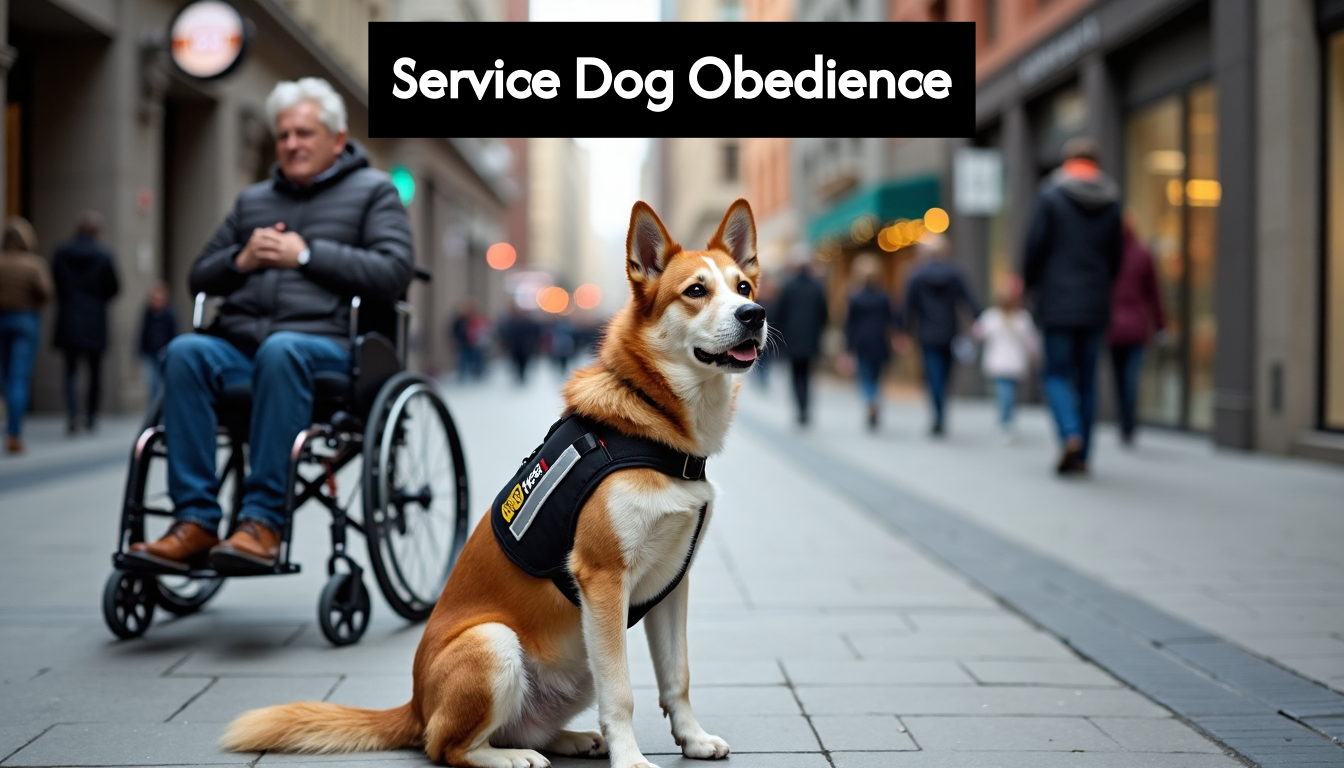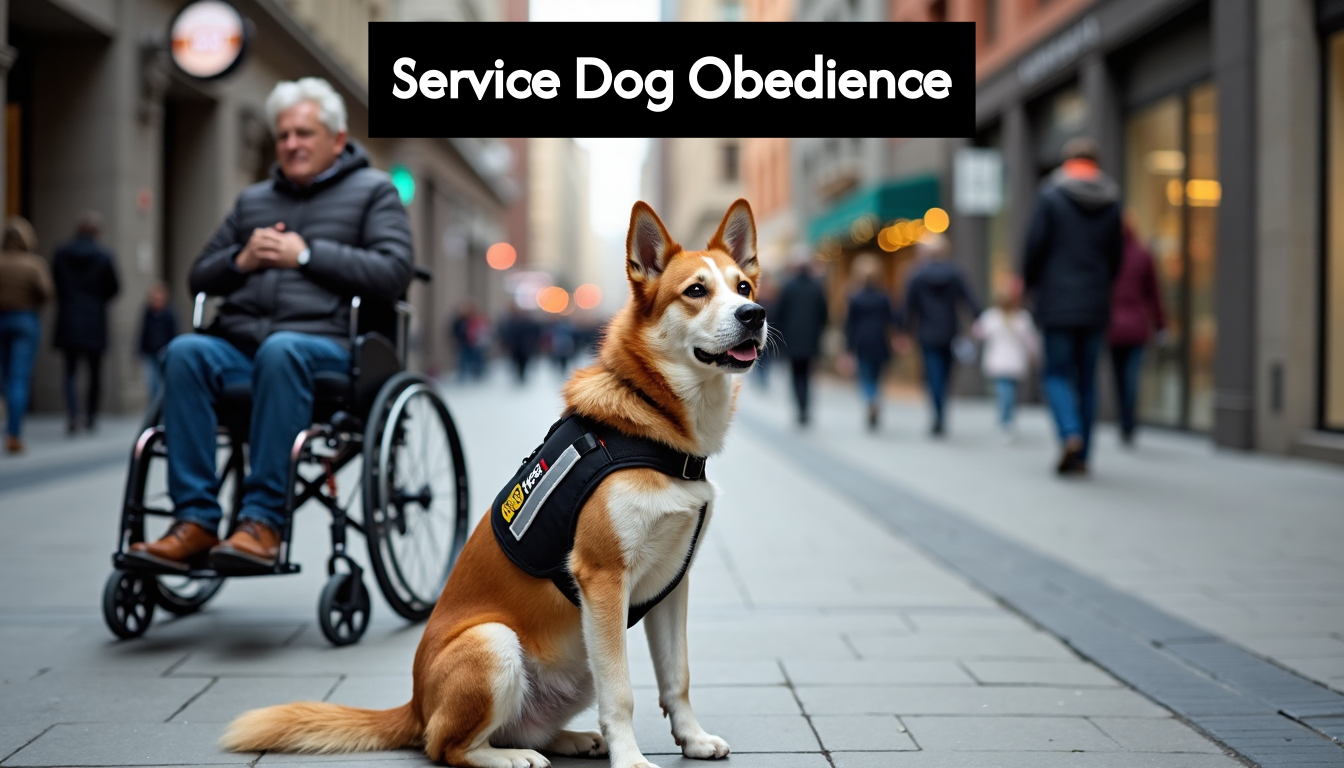
Service dog obedience is reaching a whole new level in 2025. Here’s what stands out. Nearly 70 percent of dogs in training do not graduate due to behavioral issues, making obedience the deciding factor for success. Most people think teaching ‘sit’ and ‘stay’ is enough. It turns out, those are just the tip of the iceberg. What really separates a true service dog is the ability to read subtle cues and stay laser-focused, even when chaos breaks out all around. The next wave of training is not about stricter commands. It’s about building emotional intelligence and resilience that goes way beyond anything seen before.
Table of Contents
- Why Obedience Matters For Service Dogs
- Key Service Dog Obedience Skills To Teach
- Effective Training Methods For Obedience
- Handling Common Obedience Challenges
Quick Summary
| Takeaway | Explanation |
|---|---|
| Obedience is Essential for Service Dogs | Exceptional obedience is crucial for service dogs to effectively assist handlers and navigate varied environments. Behavioral reliability is key to maintaining safety and independence. |
| Foundation Commands are Critical | Core commands such as “Sit,” “Stay,” “Come,” and “Leave It” establish a communication framework for reliable performance, enabling service dogs to respond accurately to handlers’ needs. |
| Positive Reinforcement is Key | Employing positive reinforcement techniques, such as immediate rewards and individualized approaches, fosters motivation and enhances training outcomes, building trust between the dog and handler. |
| Comprehensive Desensitization Training | Systematic exposure to diverse stimuli through controlled scenarios is vital for preparing service dogs to remain calm and focused amidst distractions and challenging situations. |
| Addressing Behavioral Challenges | Identifying and addressing common behavioral barriers through personalized strategies and advanced intervention techniques helps ensure service dogs can perform consistently and reliably. |
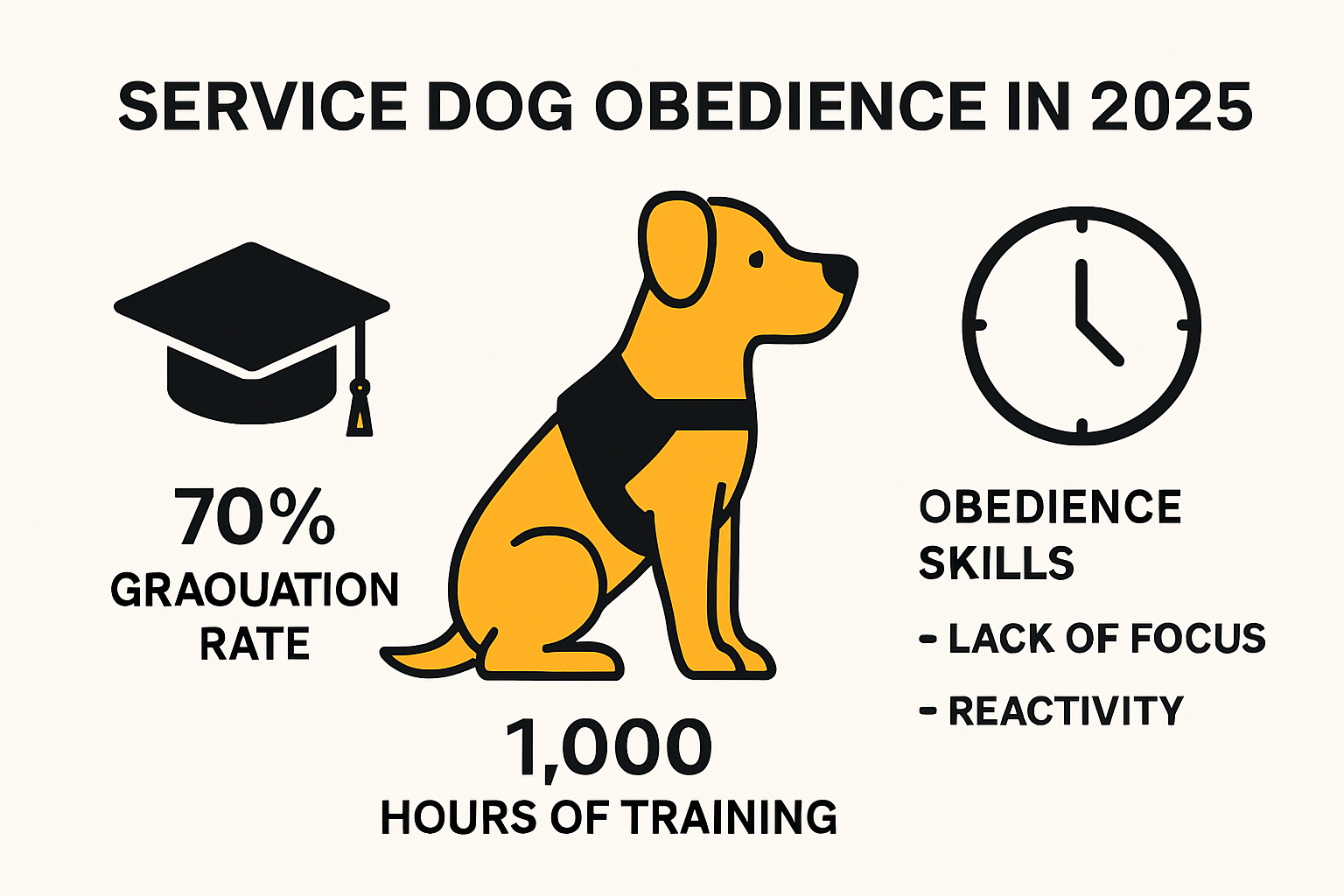
Why Obedience Matters for Service Dogs
Service dogs represent a critical lifeline for individuals with disabilities, transforming daily challenges into opportunities for independence and support. The foundation of this transformative relationship rests squarely on precise obedience. Without exceptional behavioral control, a service dog cannot effectively assist its handler or navigate complex social environments.
The Critical Role of Behavioral Reliability
Obedience is far more than simple commands. For service dogs, it represents a comprehensive system of communication, trust, and predictable performance. Explore our in-depth guide on service dog training to understand the nuanced skills required. According to research from total.vet, an astounding 70% of service dogs in training do not graduate due to behavioral issues. This statistic underscores the profound importance of rigorous obedience training.
A service dog must remain calm and focused in diverse environments. Whether navigating crowded public spaces, responding to medical alerts, or providing mobility assistance, these dogs must demonstrate unwavering attention and immediate response to their handler’s needs. This requires training that goes beyond basic sit and stay commands.
Training Intensity and Performance Standards
Professional service dog training typically involves 120+ hours of intensive preparation, reflecting the complex skills required. Total Veterinary Research reveals that hereditary diseases and behavioral problems are the most common reasons for removing a dog from service training programs. This highlights that obedience is not just about following commands but about demonstrating consistent, reliable performance under varying conditions.
The obedience standards for service dogs are dramatically higher than those for pet dogs. These animals must:
- Remain Focused: Ignore distractions completely
- Respond Instantly: Execute commands with precision
- Adapt Quickly: Transition between different environmental contexts seamlessly
A service dog’s ability to maintain composure during medical emergencies, provide physical support, or navigate complex urban environments depends entirely on its obedience training. One moment of distraction or hesitation could compromise the safety and independence of the person relying on this highly trained companion.
By 2025, service dog training will continue evolving, integrating advanced behavioral assessment techniques and more nuanced training methodologies. The goal remains consistent: creating reliable, responsive, and emotionally intelligent service animals that can genuinely transform their handlers’ quality of life through impeccable obedience and task performance.
Key Service Dog Obedience Skills to Teach
Training a service dog requires a comprehensive approach that goes beyond basic pet training. These highly specialized animals must master a complex set of skills that ensure they can reliably support their handlers in diverse and challenging environments. Learn more about essential service dog training techniques to understand the depth of preparation required.
Foundation Commands for Reliable Performance
The cornerstone of service dog training involves mastering core obedience commands that form the basis of their advanced capabilities. According to Service Dog Certifications, essential commands include:
- Sit and Stay: Maintaining position for extended periods (3+ minutes at 20+ feet distance)
- Heel: Walking consistently beside the handler for 5+ minutes
- Come: Immediate recall in any environment
- Leave It/Drop It: Critical for safety and preventing potential hazards
These fundamental commands create a communication framework that allows the service dog to respond precisely to their handler’s needs. The ability to maintain focus and execute commands with exceptional accuracy distinguishes a service dog from a typical pet.
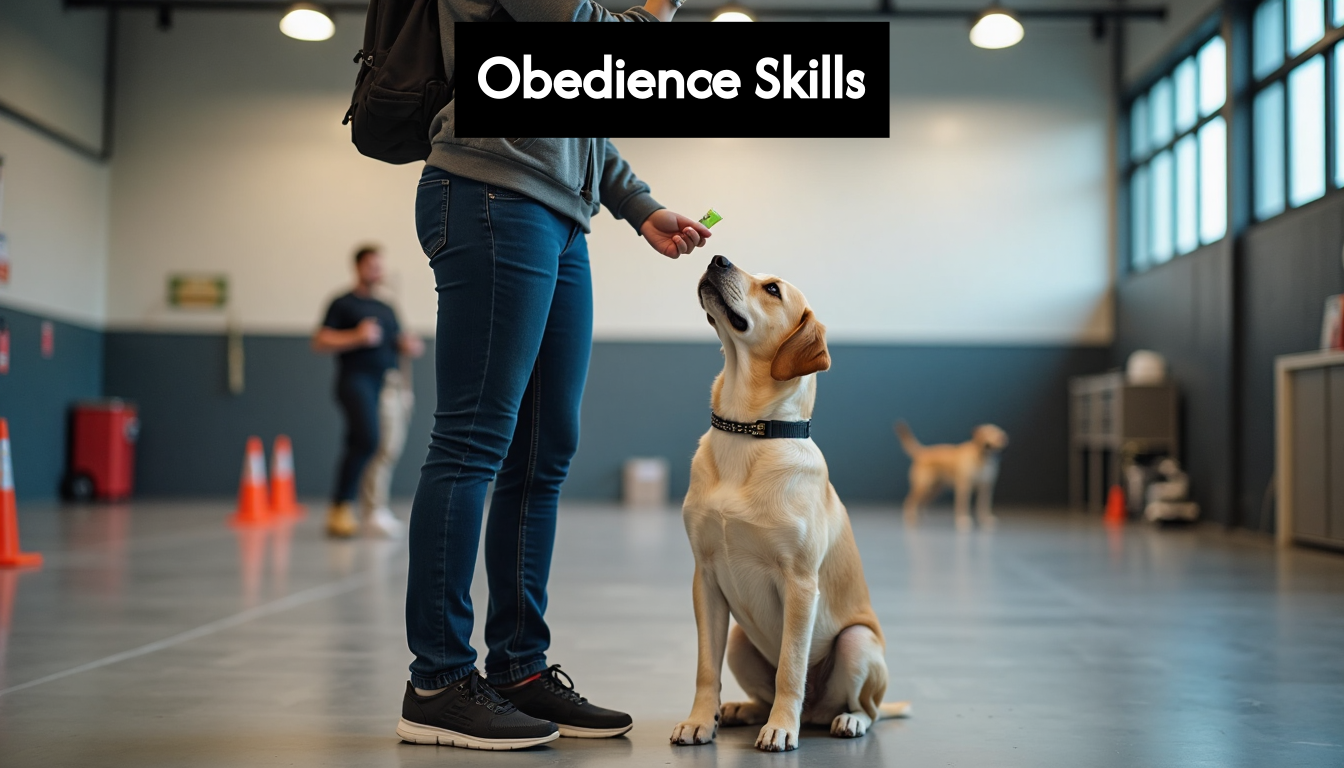
Advanced Cue Reading and Emotional Intelligence
Beyond physical commands, service dogs must develop an extraordinary ability to read and respond to subtle handler cues. Medical Mutts Research emphasizes that successful service dog training involves developing emotional intelligence and intuitive communication skills.
This advanced skill set includes:
- Recognizing changes in handler’s physiological signals
- Understanding context-specific behavioral expectations
- Maintaining composure in high-stress or complex environments
- Providing immediate assistance during medical emergencies
Trainers must focus on developing a deep bond that allows the dog to anticipate and respond to the handler’s needs before a verbal command is even given. This level of synchronization requires intensive training and a nuanced understanding of canine communication and human interaction.
By 2025, service dog training will continue to evolve, incorporating more sophisticated behavioral assessment techniques and personalized training approaches. The ultimate goal remains consistent: creating a reliable, responsive companion that can genuinely enhance the independence and quality of life for individuals with disabilities.
Effective Training Methods for Obedience
Training service dogs requires a sophisticated and nuanced approach that goes far beyond traditional dog training techniques. By 2025, the landscape of service dog obedience training will be defined by scientifically validated methods that prioritize psychological well-being, precise communication, and positive reinforcement. Discover expert training strategies for 2025 to understand the cutting-edge approaches transforming service dog preparation.
Positive Reinforcement: The Foundation of Modern Training
Positive reinforcement has emerged as the gold standard in service dog training. According to Medical Mutts Research, this approach fundamentally differs from outdated dominance-based methods by focusing on rewarding desired behaviors rather than punishing mistakes. This technique builds trust, enhances learning, and supports the dog’s emotional stability.
Key principles of positive reinforcement include:
- Immediate Reward: Providing instant positive feedback
- Consistent Markers: Using clear verbal or clicker signals
- Graduated Challenges: Progressively increasing task complexity
- Individual Adaptation: Tailoring approaches to each dog’s unique personality
By creating a supportive learning environment, trainers can develop service dogs that are not just obedient, but genuinely motivated to perform their critical tasks.
Comprehensive Desensitization and Socialization Techniques
Assistance Dogs International emphasizes the importance of comprehensive desensitization training. This method prepares service dogs to remain calm and focused in diverse and potentially challenging environments. Effective desensitization involves systematic exposure to various stimuli, helping dogs develop:
- Composure in crowded spaces
- Resistance to unexpected sounds and movements
- Ability to maintain focus during medical emergencies
- Calm response to sudden environmental changes
Trainers use controlled scenarios that simulate real-world challenges, gradually increasing complexity and intensity. This approach ensures service dogs can reliably support their handlers in unpredictable situations.
By 2025, technology will play an increasingly significant role in service dog training. Advanced simulation techniques, virtual reality environments, and data-driven behavioral assessments will provide unprecedented insights into canine learning processes. The goal remains consistent: creating service dogs that are not just obedient, but intelligent, adaptable companions capable of transforming their handlers’ lives through exceptional performance and unwavering support.
Handling Common Obedience Challenges
Service dog training is a complex journey filled with unique challenges that require strategic intervention and specialized approaches. Learn advanced troubleshooting techniques for dog training to understand the nuanced strategies professional trainers employ when addressing behavioral obstacles.
Identifying and Addressing Behavioral Barriers
Every service dog training program encounters specific challenges that can potentially derail a dog’s ability to perform critical tasks. Assistance Dogs International reports that out of nearly 10,963 service dogs in training worldwide, a significant percentage struggle with consistent obedience due to various environmental and psychological factors.
Common behavioral challenges include:
- Distraction Sensitivity: Difficulty maintaining focus in stimulating environments
- Stress Reactivity: Unexpected responses to sudden sounds or movements
- Task Consistency: Maintaining performance under varying emotional or physical conditions
- Handler Synchronization: Developing intuitive communication and trust
Successful intervention requires a multifaceted approach that addresses the root causes of these behavioral obstacles. Trainers must develop personalized strategies that consider each dog’s unique psychological profile and learning style.
Advanced Intervention Strategies
Modern service dog training emphasizes proactive problem-solving techniques that go beyond traditional correction methods. This approach involves:
- Comprehensive behavioral assessment
- Targeted desensitization protocols
- Individualized motivation techniques
- Gradual exposure to complex environmental scenarios
Trainers increasingly utilize technology and data-driven approaches to track and modify behavioral patterns. Sophisticated tracking systems can now monitor a dog’s physiological responses, helping trainers identify potential challenges before they become significant obstacles.
By 2025, service dog training will integrate advanced neurological understanding with precise behavioral modification techniques. The goal remains creating dogs that can navigate complex environments with unwavering reliability, providing critical support to individuals with diverse needs. Understanding and addressing obedience challenges is not just about correction but about developing a deep, communicative partnership between the service dog and its handler.
Frequently Asked Questions
What is the importance of obedience for service dogs?
Obedience is crucial for service dogs as it ensures they can effectively assist their handlers in diverse situations, maintain safety, and navigate complex environments.
What key skills should a service dog master?
A service dog should master foundation commands like “Sit,” “Stay,” “Come,” and “Leave It,” as well as advanced skills like emotional intelligence and cue reading to respond accurately to their handler’s needs.
How long does service dog training typically take?
Professional service dog training usually involves over 120 hours of intensive preparation, focusing on complex skills and behavioral reliability to ensure the dog’s effectiveness.
What training methods are effective for service dog obedience?
Effective training methods include positive reinforcement techniques, comprehensive desensitization training, and individualized strategies to overcome common behavioral challenges.
Unlock Next-Level Service Dog Success with Reliable Communication
Struggling to achieve flawless obedience and instant response with your service dog? This article highlights how attention, behavioral reliability, and communication are top challenges—especially when distractions threaten safety or independence. Your training journey deserves tools designed for real-life demands, not just the basics.
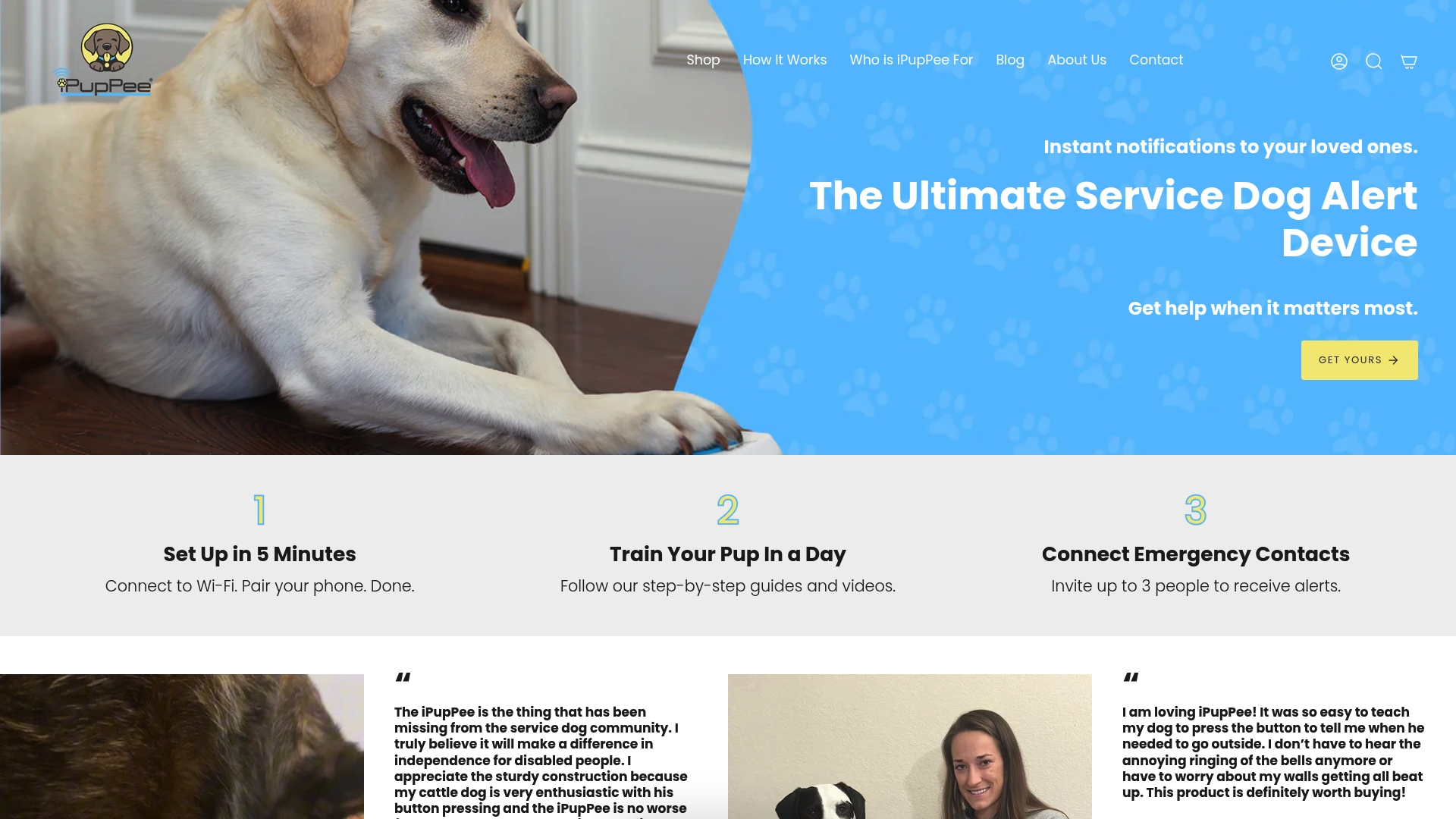
Imagine if your dog could signal you the moment it senses a change or need. Now, with the iPupPee alert device, you can bridge the communication gap and bring the obedience skills from your training into everyday life. The iPupPee button lets your dog communicate in a clear, safe way—ideal for those requiring immediate support or living with mobility differences. See how the right solution turns advanced obedience into confident teamwork.
Ready to make your service dog’s training truly work for you? Visit ipuppee.com to discover the device, read customer stories, and start building safer, smarter communication now.
Recommended Articles
-
https://ipuppee.com/blogs/news/from-wolves-to-best-friends-the-origins-of-domestic-dogs)
-
https://ipuppee.com/blogs/news/top-tech-products-your-dog-needs-in-2024)
-
https://ipuppee.com/blogs/news/paws-preparedness-is-your-dog-ready-for-an-emergency)
-
https://ipuppee.com/blogs/news/winter-dog-care-keeping-your-pup-cozy-and-safe)
-
https://ipuppee.com/blogs/news/puppy-love-celebrating-national-puppy-day)

